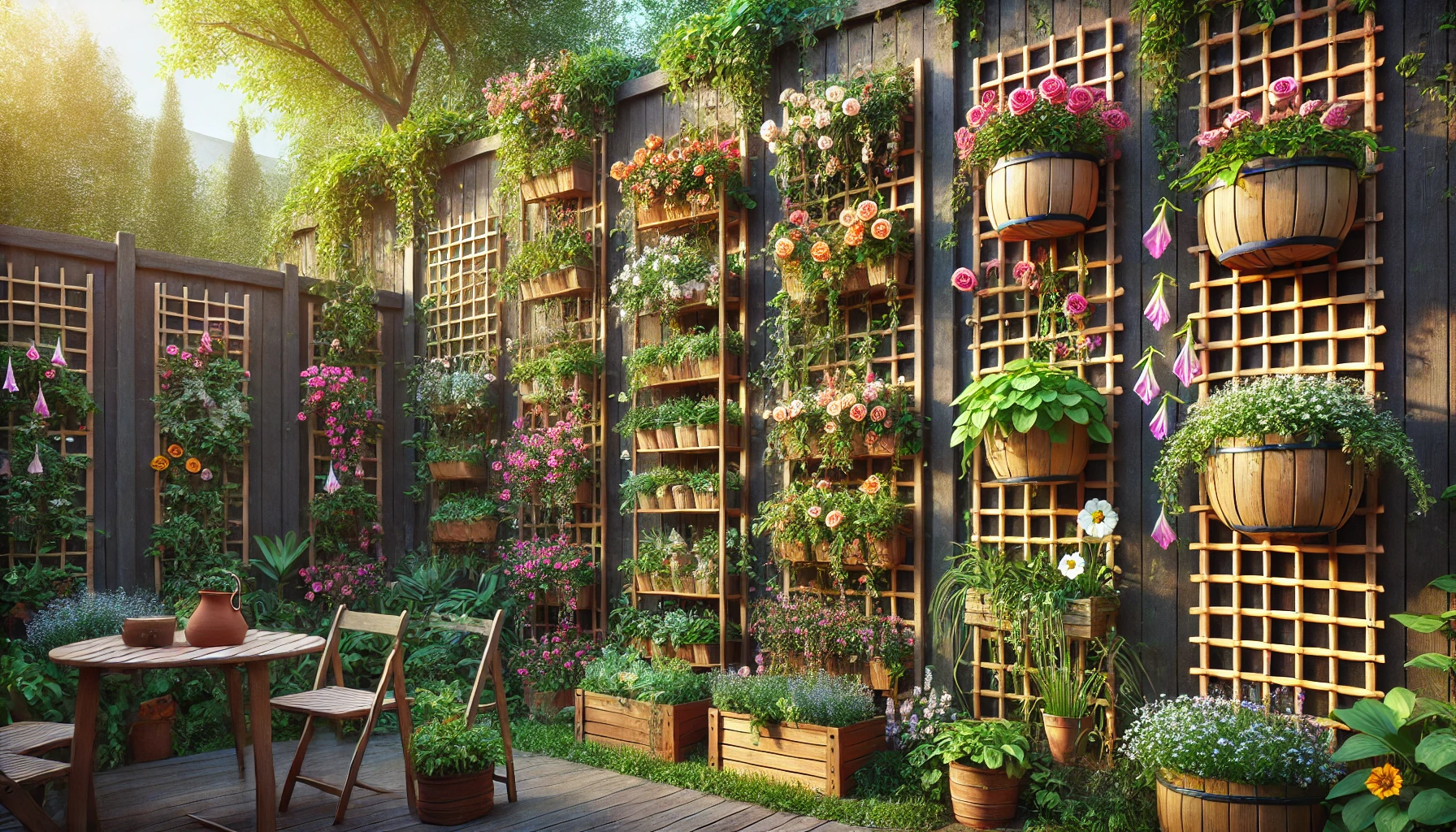Vertical gardening is a brilliant solution for those with limited space or anyone looking to add more dimension to their outdoor space. By using climbing plants and wooden trellises, you can make the most of your vertical space while creating a visually stunning garden. In this article, we will explore how to effectively use climbing plants and wooden trellises to organize your garden and maximize its beauty.
1. Understand the Benefits of Vertical Gardening
Vertical gardening allows you to use your garden space more efficiently by growing plants upward rather than outward. This is especially beneficial in small spaces, such as apartments, balconies, or urban gardens. It can also help reduce the need for bending down to tend to your plants, making it a great option for people with mobility issues or those who prefer a low-maintenance garden:
- Vertical gardening works well in both small and large gardens, adding depth and height to the space.
- Use vertical structures to create privacy screens or garden walls.
- With the right setup, you can grow a wide variety of plants, including vegetables, flowers, and climbing vines.
2. Choose the Right Climbing Plants
The first step in using vertical gardening is selecting the right climbing plants. Some plants naturally thrive when growing vertically, while others need support structures like trellises to help them climb. Common climbing plants include vines, flowers, and even vegetables. Choose plants that suit your climate and the amount of sunlight your garden receives:
- For flowers, consider varieties like clematis, roses, or morning glories, which all love to climb.
- Vegetables like peas, beans, and tomatoes are excellent choices for vertical gardening as they require support to grow upward.
- Keep in mind the growth habit of the plant, as some climbing plants are more aggressive than others and may need pruning.
3. Install Wooden Trellises for Support
Wooden trellises are an ideal support structure for climbing plants. These structures can be placed against a wall, fence, or freestanding in your garden. Wooden trellises provide both functionality and aesthetic appeal, offering a natural, rustic look that complements the greenery of your climbing plants. They are sturdy and can be customized to fit your garden’s needs:
- Choose a trellis that suits the size of your climbing plants—some may need larger, sturdier structures while others can use lighter frames.
- Install the trellis in a sunny spot to ensure your climbing plants have optimal light for growth.
- Make sure the trellis is securely anchored to avoid tipping over as the plants grow heavier.
4. Create a Vertical Garden with Multiple Trellises
Incorporating multiple trellises in your garden allows you to organize different plants based on their size, growth patterns, and sunlight requirements. You can position smaller trellises for more delicate plants, while using larger, stronger trellises for heavy-duty climbing plants like tomatoes or grapes. This method of vertical gardening helps keep your garden organized and visually appealing:
- Group plants with similar light and water needs together to ensure they thrive.
- Consider using different types of trellises, such as netting or grids, to support a variety of climbing plants.
- Add visual interest by arranging trellises in a way that creates symmetry or a layered effect.
5. Use Vertical Planters for Added Organization
In addition to trellises, vertical planters are a great way to organize plants and save space. These planters come in various forms, such as hanging baskets, wall-mounted pots, or tiered planters. Vertical planters allow you to grow a variety of plants without taking up precious ground space, making them perfect for balconies or small gardens:
- Use wall-mounted pots to grow herbs or small flowering plants.
- Tiered planters are perfect for cascading plants like petunias or strawberries.
- Place vertical planters in areas that receive the right amount of sunlight, and ensure that they are easily accessible for watering and maintenance.
6. Create a Garden Focal Point with a Climbing Plant Feature
A trellis covered in climbing plants can become the focal point of your garden. You can design a stunning entryway or garden arch with climbing flowers like roses or wisteria, which will not only add beauty but also fragrance to your outdoor space. This feature can create a dramatic, visually pleasing effect while also organizing your garden in a way that draws attention to the key areas:
- Create an archway or frame with trellises that leads into different sections of your garden, offering a sense of flow.
- For a more dramatic effect, choose climbing plants with colorful or fragrant flowers.
- Use the climbing plant feature to mark the entrance of your garden or to highlight a seating area.
7. Maintain Your Climbing Plants and Trellises
Once your climbing plants are growing and supported by the trellises, it’s important to regularly maintain them. Keep an eye on plant growth and prune as necessary to prevent overgrowth or tangling. Check the trellises periodically to ensure they remain stable and provide adequate support for the plants:
- Trim back any unruly vines or branches to keep your garden tidy.
- Check the trellis for signs of damage or wear, especially after a heavy rain or storm.
- Water the plants regularly, ensuring that they receive enough moisture to grow upwards.
Maximize Your Garden’s Potential with Vertical Gardening
Using climbing plants and wooden trellises for vertical garden organization allows you to make the most of your garden space while adding beauty and structure. By selecting the right plants, installing sturdy trellises, and organizing your plants vertically, you can create an efficient, low-maintenance garden that’s both functional and aesthetically pleasing. Vertical gardening is an excellent way to expand your gardening possibilities and enjoy a more organized, thriving outdoor space.
